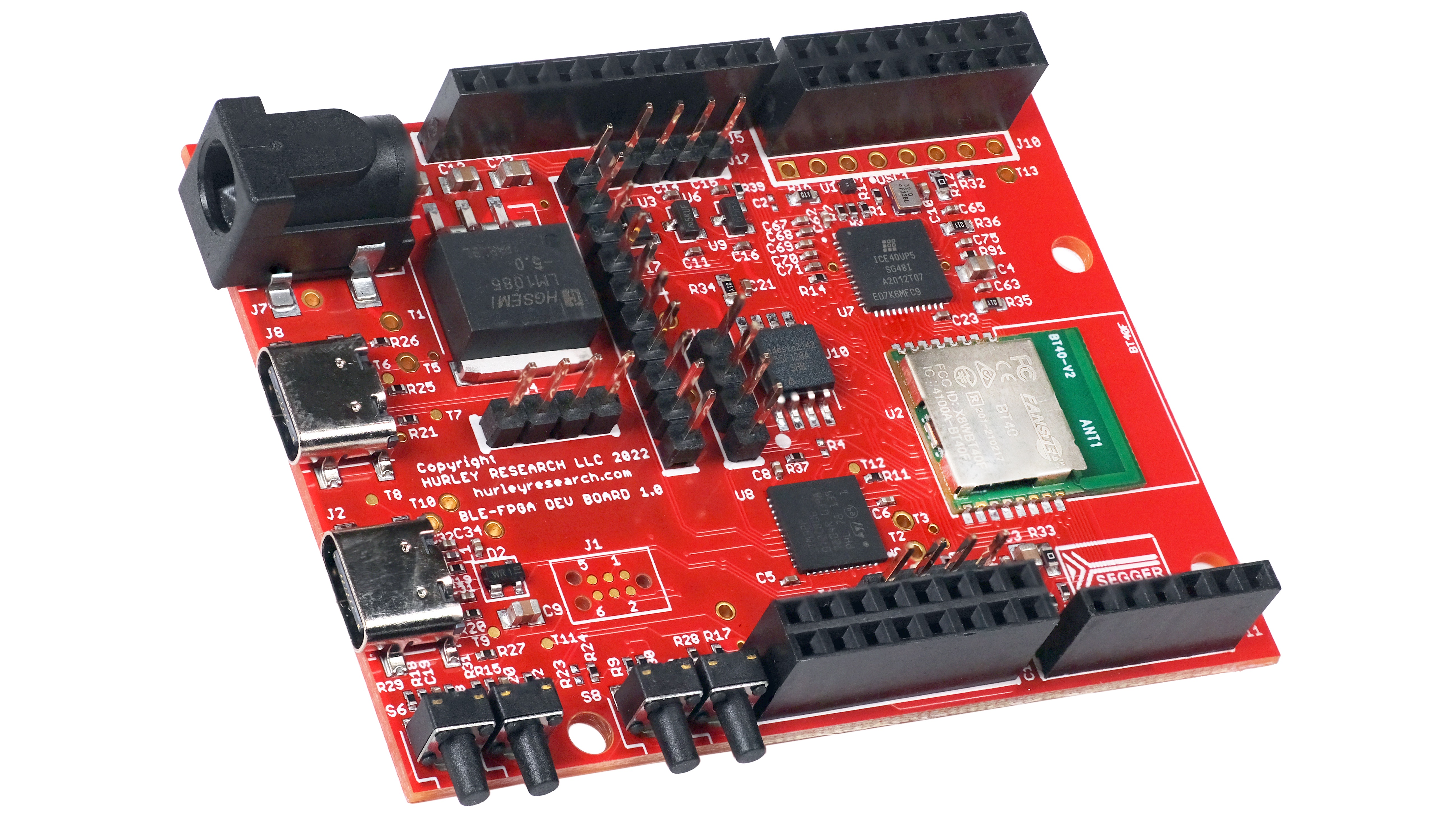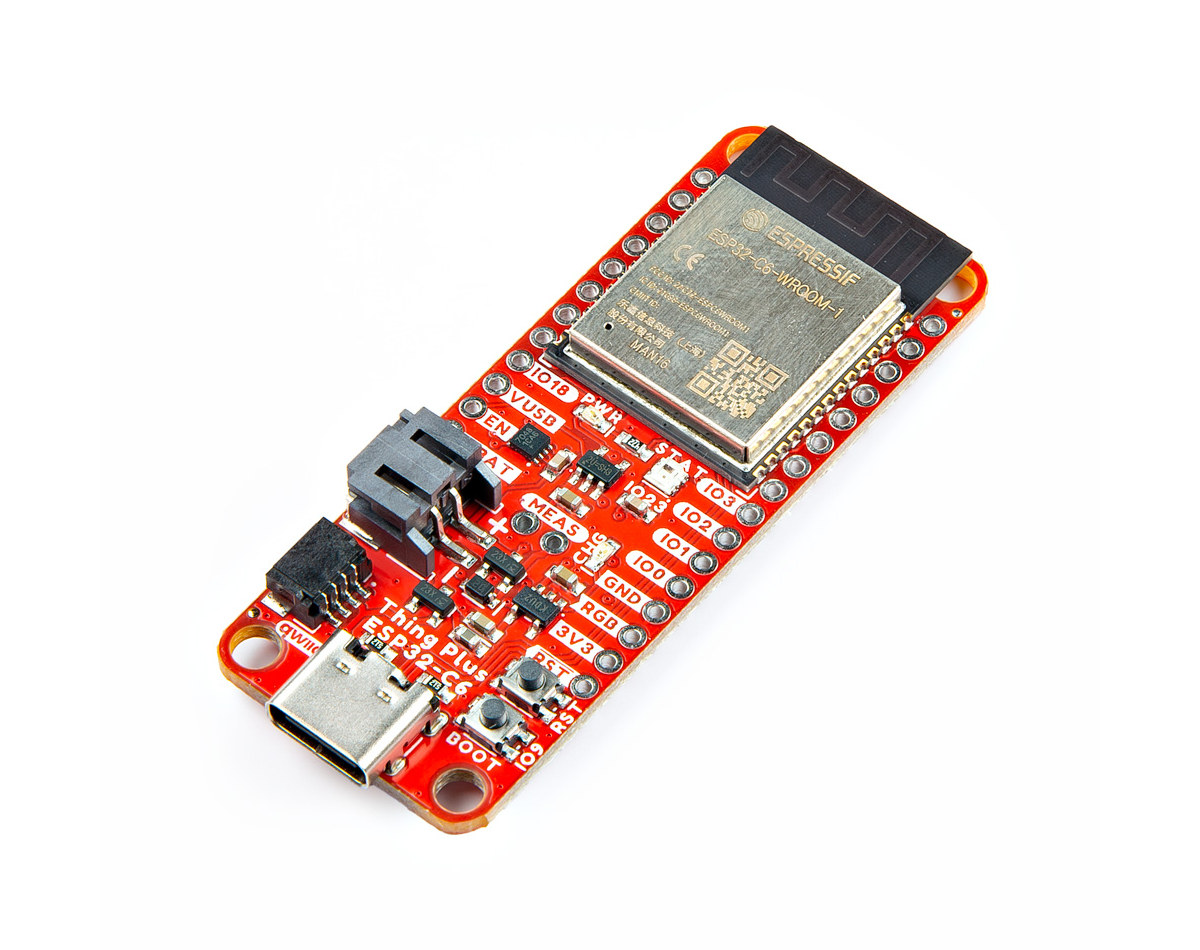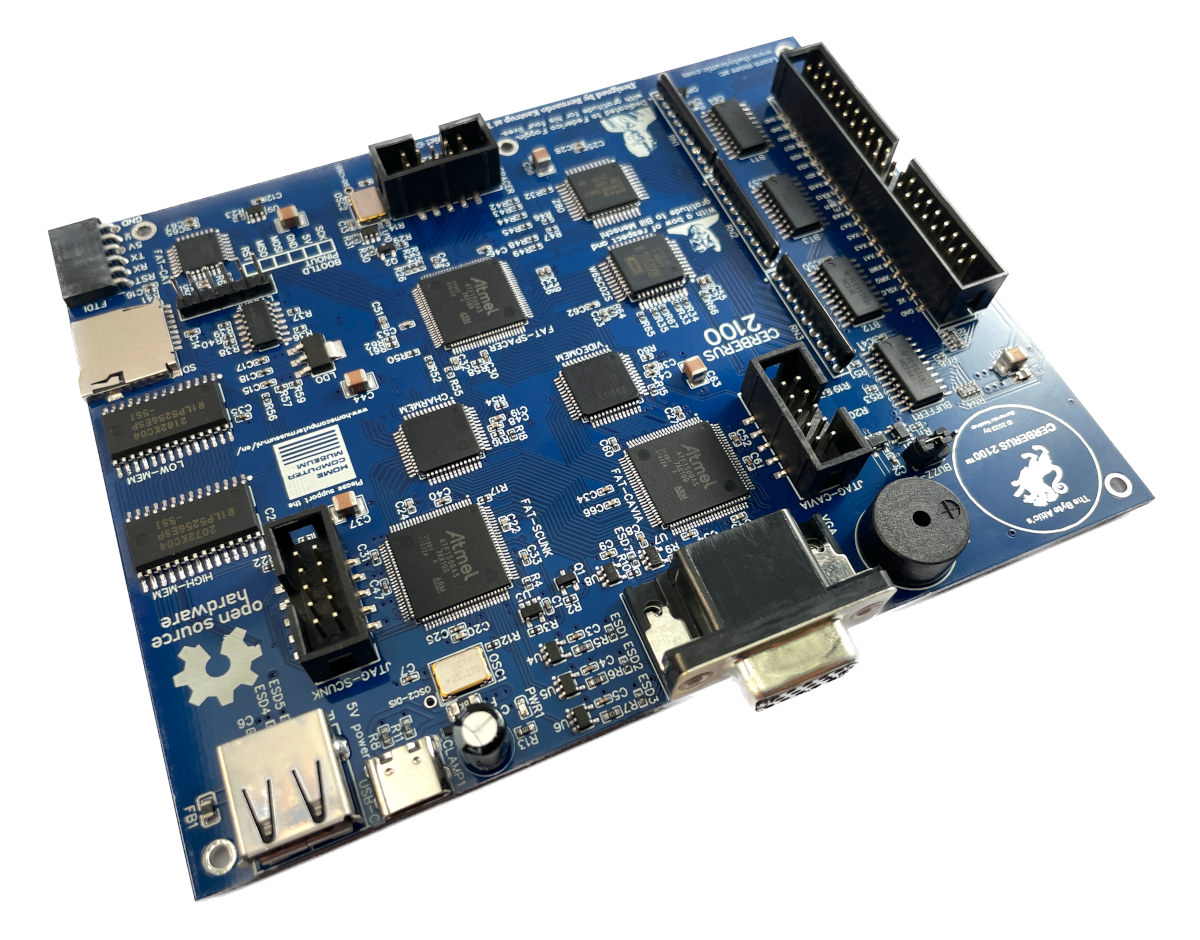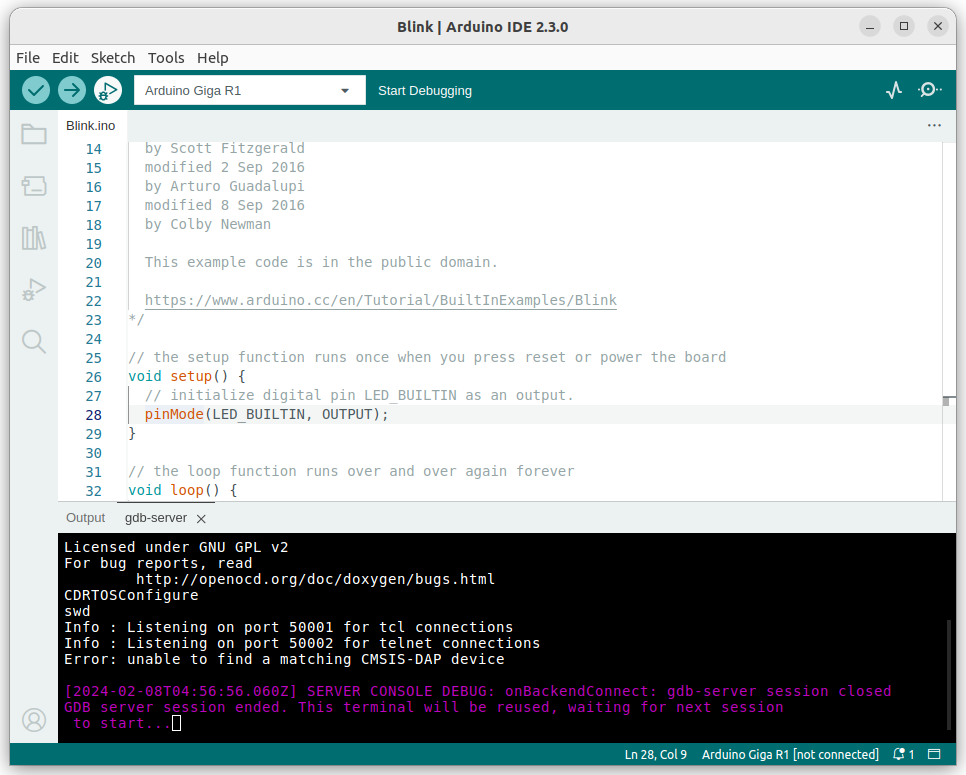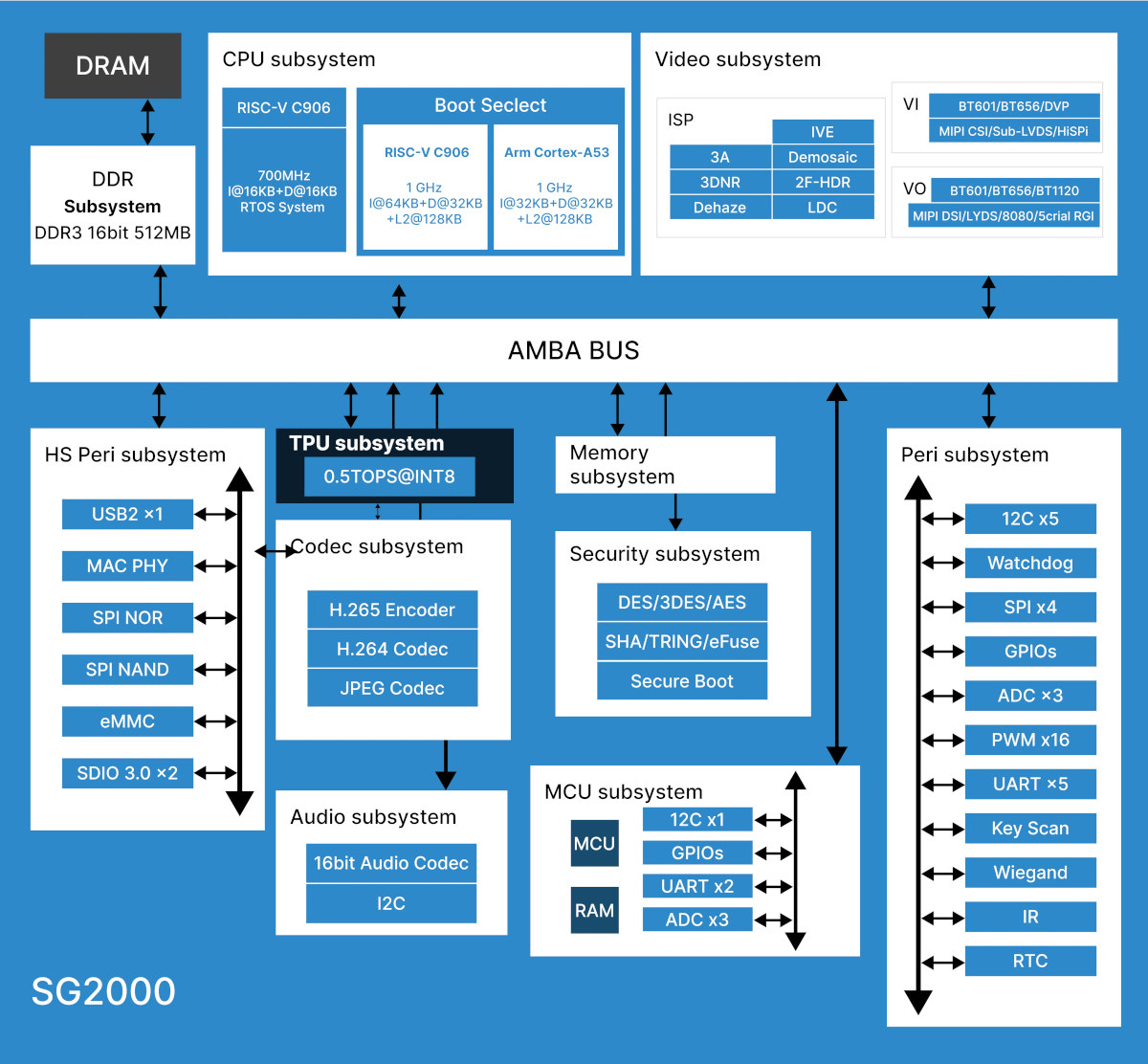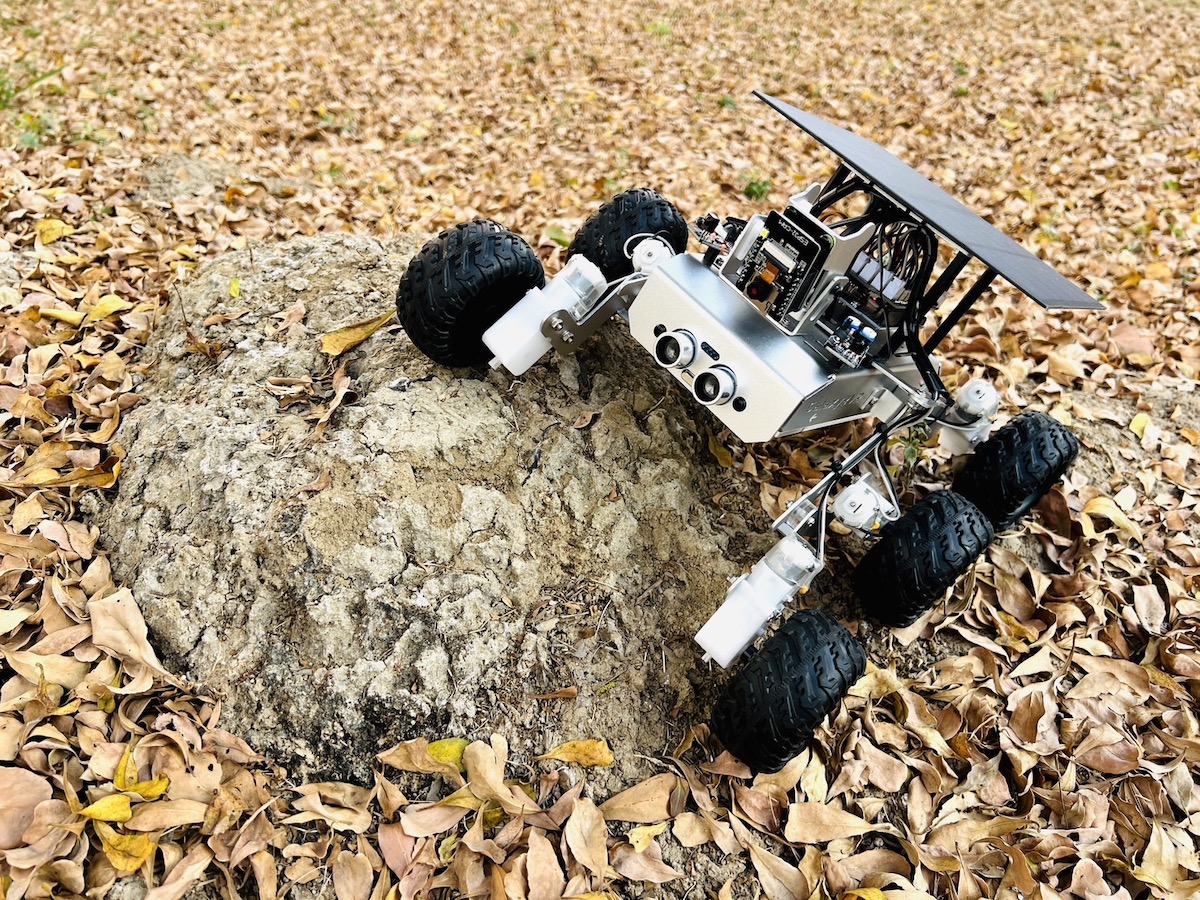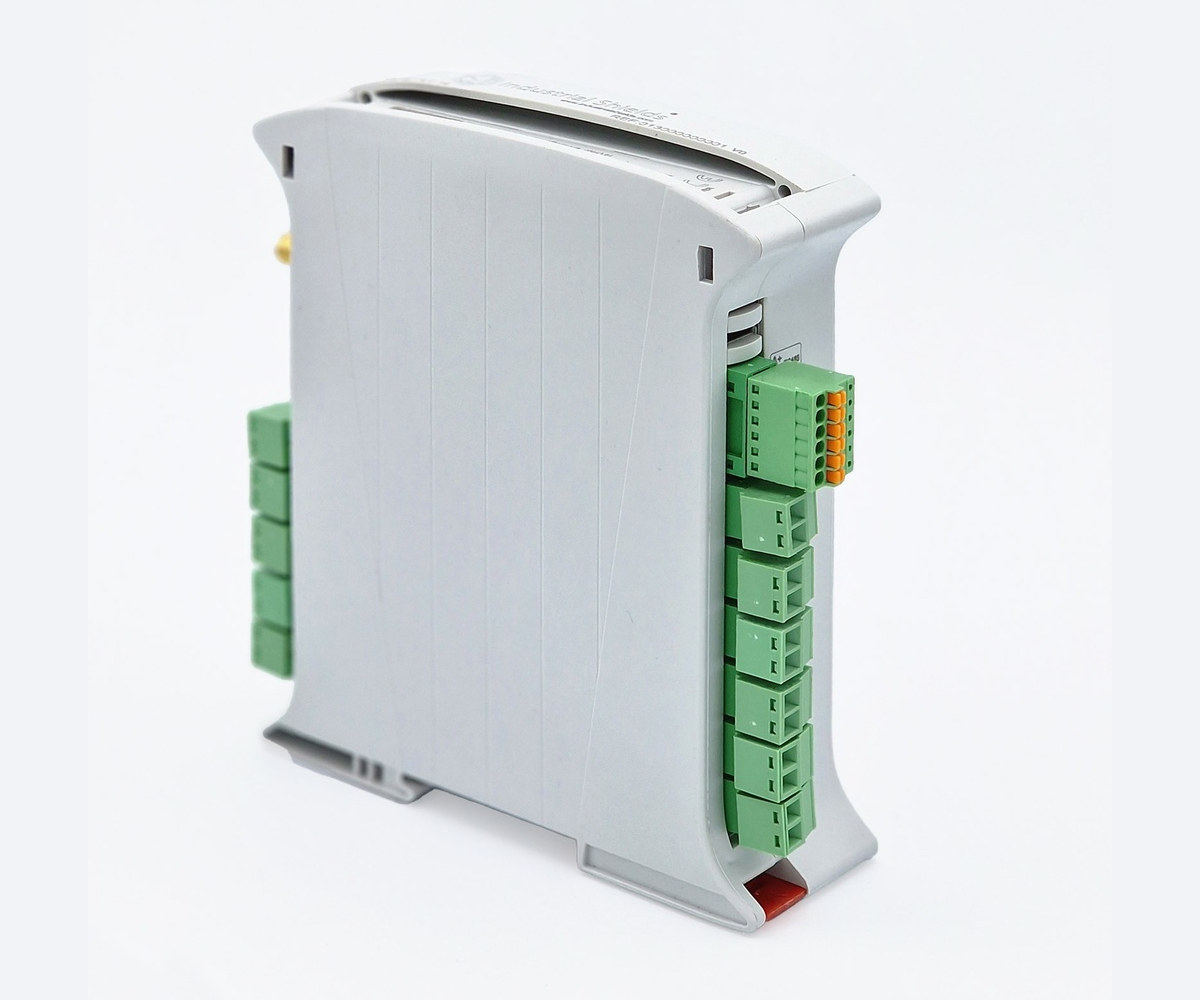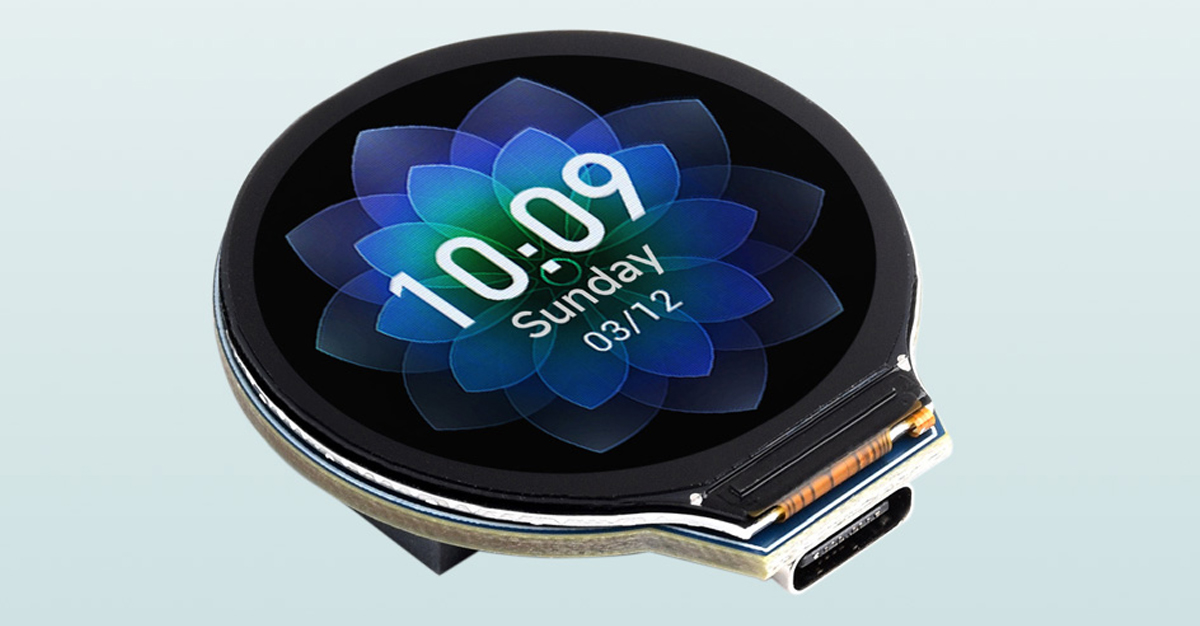The NRFICE FPGA is a Bluetooth FPGA board designed for edge computing and IoT applications. It is built upon a combination of the dual-core nRF5340 Bluetooth SoC and the Lattice ICE40UP5K FPGA. The ICE40 UltraPlus is a low-power, high-performance FPGA for edge computing and artificial intelligence projects and the nRF5340 is a Bluetooth 5.3 SoC that supports Bluetooth Low Energy (BLE), Bluetooth Mesh, Thread, NFC, and Zigbee. Through the Nordic nRF5340, NRFICE can load a project directly into the iCE40 FPGA, bypassing the usual extensive toolchain setup. This enables a new class of FPGA development, where bitstreams can be hosted in the cloud, selected by a user on their phone, and loaded wirelessly to the board. It features a built-in J-Link OB for easy debugging and programming without the need for emulator dongles and is similar to the previously covered Segger emPower evaluation board in this regard. This board supports […]
SparkFun Thing Plus – ESP32-C6 board comes with 16MB flash, LiPo battery support
SparkFun has launched yet another ESP32-C6 board with the “Thing Plus – ESP32-C6” based on the ESP32-C6-WROOM-1-N16 module with 16MB flash and a PCB antenna and range of I/Os and power options. The board features 28 through holes with up to 23 multi-function GPIOs and a Qwicc connector for expansion, and supports 5V or LiPo battery power through respectively a USB-C port a 2-pin JST connector combined with a charging chip, and a fuel gauge. SparkFun Thing Plus – ESP32-C6 specifications: Wireless module – ESP32-C6-WROOM-1-N16 MCU – ESP32-C6 32-bit single-core RISC-V microcontroller with 2.4 GHz WiFI 6, Bluetooth 5 LE, and 802.15.4 radio (Zigbee and Thread); Matter-compatible Storage – 16 MB flash PCB Antenna Storage – MicroSD card slot USB – 1x USB Type-C port for power and programming Expansion 12-pin + 16-pin headers with 23x multifunctional GPIOs Up to 7x 12-bit ADC channels Up to 2x UART channels (with […]
CERBERUS 2100 is a BASIC-programmable educational board with Z80 and 6502 8-bit CPUs
Olimex has just announced the launch of the CERBERUS 2100 open-source hardware, educational, multi-processor 8-bit computer with both Z80 and 6502 CPUs, as well as a Microchip AVR processor serving as an I/O controller. The CERBERUS 2100 features several CPLD and is fully programmable from the lowest level (individual gates and flip-flops) up to BASIC interpreters running on the Z80 and 6502 CPUs. Olimex did not design this themselves as the hardware design is from Bernardo Kastrup (aka TheByteAttic), while BASIC interpreters were written by Alexander Sharikhin (6502) and Dean Belfield (Z80). CERBERUS 2100 specifications: Processors Zilog Z80 8-bit microprocessor at 4 or 8 MHz (user selectable) Western Design Center W65C02S 8-bit microprocessor at 4 or 8 MHz (user selectable) “FAT-CAT” (Custom ATmega328pb) Microchip 8-bit AVR ATMega328PB microcontroller at 16 MHz CPLDs (ATF1508AS-7AX100) FAT-SCUNK (Scan CoUNter and clocK) and FAT-CAVIA (ChAracter Video Adapter) for video circuit connected to a 25.175 […]
Arduino IDE 2.3 released with the Debug feature now considered stable
Arduino IDE 2.3 has just been released with a range of bug fixes and improvements, but the main change is that the debug feature is not experimental anymore and is now considered stable. Bug fixes include addressing CVE-2023-4863 security flaw (See GitHub for related commits) and based on the wording used in the announcement it looks to be the only one… So the main news is that the Debug feature is now fully incorporated into the IDE. But what is it exactly? The new documentation website explains that Arduino CLI 0.9.0 and Arduino IDE 2.x support “sketch debugging” with openocd server. Arduino also explains it’s currently supported by Arduino boards based on the Mbed core including GIGA R1 WiFi, Portenta H7, Opta, Nano BLE, and Nano RP2040 Connect, and Renesas-based boards such as UNO R4 and Portenta C33 will get support very soon. The company also says they are working […]
SOPHGO SG2000/SG2002 AI SoC features RISC-V, Arm, and 8051 cores, supports Android, Linux, and FreeRTOS
SOPHGO SG2000 and SG2002 are new SoCs featuring a bunch of RISC-V and Arm cores capable of running Linux, Android, and FreeRTOS simultaneously, and to maximize the fun an 8051 MCU core is also in the mix along with a 0.5 TOPS (SG2000) or 1 TOPS (SG2002) AI accelerator. More specifically we have one 1GHz C906 64-bit core capable of running Linux, one 1GHz Arm Cortex-A53 for Linux or Android, another 700 MHz C906 RISC-V core for FreeRTOS, and a 300 MHz 8051-core for real-time I/Os, as well as 256MB or 512MB SiP DRAM. The chip is designed for AIoT applications such as Smart IP cameras, facial recognition, and smart home devices. SOPHGO SG2000/SG2002 specifications: CPU cores 1x C906 64-bit RISC-V core @ 1GHz 1x C906 64-bit RISC-V core @ 700MHz 1x Arm Cortex-A53 core @ 1GHz MCU – 8051 8-bit microcontroller core @ 25 to 300 MHz with 6KB […]
SunFounder GalaxyRVR review – An Arduino programmable Mars Rover-like robot for education
SunFounder sent us a GalaxyRVR 6-wheel robot for review. It looks like NASA’s Mars Rover robots but targets the education market with an Arduino UNO R3 compatible board and an ESP32-CAM board for WiFi connectivity and video capture. The GalaxyRVR robot kit can transmit video signals over WiFi to explore planet Earth with your mobile device or tablet and the camera can be adjusted up and down thanks to a servo motor. The robot gets its power from a solar panel coupled with a battery and features sensors such as obstacle avoidance and ultrasonic modules. NASA’s Mars Rover exploration robots NASA is currently using the Perseverance rover, also known as Percy, as the latest planetary exploration robot to land on Mars. It is designed to explore the Jezero Crater as part of NASA’s Mars 2020 mission. In addition to its scientific instruments, Perseverance also carries Ingenuity, a small experimental Martian […]
Entry-level Industrial Shields ESP32 PLC 14 sells for 100 Euros
Boot & Work Corp has just introduced an entry-level PLC based on ESP32 wireless microcontroller with the “Industrial Shields ESP32 PLC 14” that comes with seven inputs and five outputs, as well as I2C, RS485, Ethernet, WiFi, and Bluetooth communication interfaces. We first covered “Industrial Shields” automation devices in 2017 when the company introduced panel PCs based on Banana Pi, Raspberry Pi, and Hummingboard (NXP i.MX 6) SBCs, as well as a few Arduino and Raspberry Pi PLCs. Boot & Work Corp then launched a Raspberry Pi 4-based PLC in 2021, and now the company has introduced the ESP32 PLC 14 part of a larger family of PLC devices as we’ll see further below. ESP32 PLC 14 specifications: Wireless module – ESP-WROOM-32U with ESP32 dual-core wireless microcontroller @ 240 MHz with 4MB SRAM, 4MB flash, 2MB PSRAM I/Os through terminal blocks 4x Digital Outputs 12/24 V DC (can also act […]
Waveshare ESP32-S3-LCD-1.28 development board with 1.28-inch IPS round LCD is available for $15
The Waveshare “ESP32-S3-LCD-1.28” is an ESP32-S3-based display board featuring a 1.28-inch round LCD screen with a 240×240 resolution, driven by the GC9A01 display driver chip. It also includes a Li-ion battery charger, a QMI8658 6-axis IMU (for motion tracking), a USB Type-C connector, and wireless capabilities. This board is quite similar to others like the Lilygo T-RGB, Round Display for XIAO, ESP32-S3 Round SPI boards. However, it’s thinner and more affordable. Waveshare ESP32-S3-LCD-1.28 development board specifications: Wireless MCU – ESP32-S3 Xtensa 32-bit LX7 dual-core, up to 240MHz frequency. Display: 1.28-inch round IPS LCD. Resolution – 240×240 pixels. 65K color. Display Chip – GC9A01A. IMU Parameters: Sensor – QMI8658 Accelerometer resolution – 16-bit; Range (Optional): ±2, ±4, ±8, ±16g. Gyroscope resolution – 16 bits; Range (Optional) – ±16, ±32, ±64, ±128, ±256, ±512, ±1024, ±2048°/sec. Memory: Built-in 512KB SRAM. 384KB ROM. Onboard 2MB PSRAM. External 16MB Flash memory (W25Q128JVSIQ). Wireless Connectivity: […]


